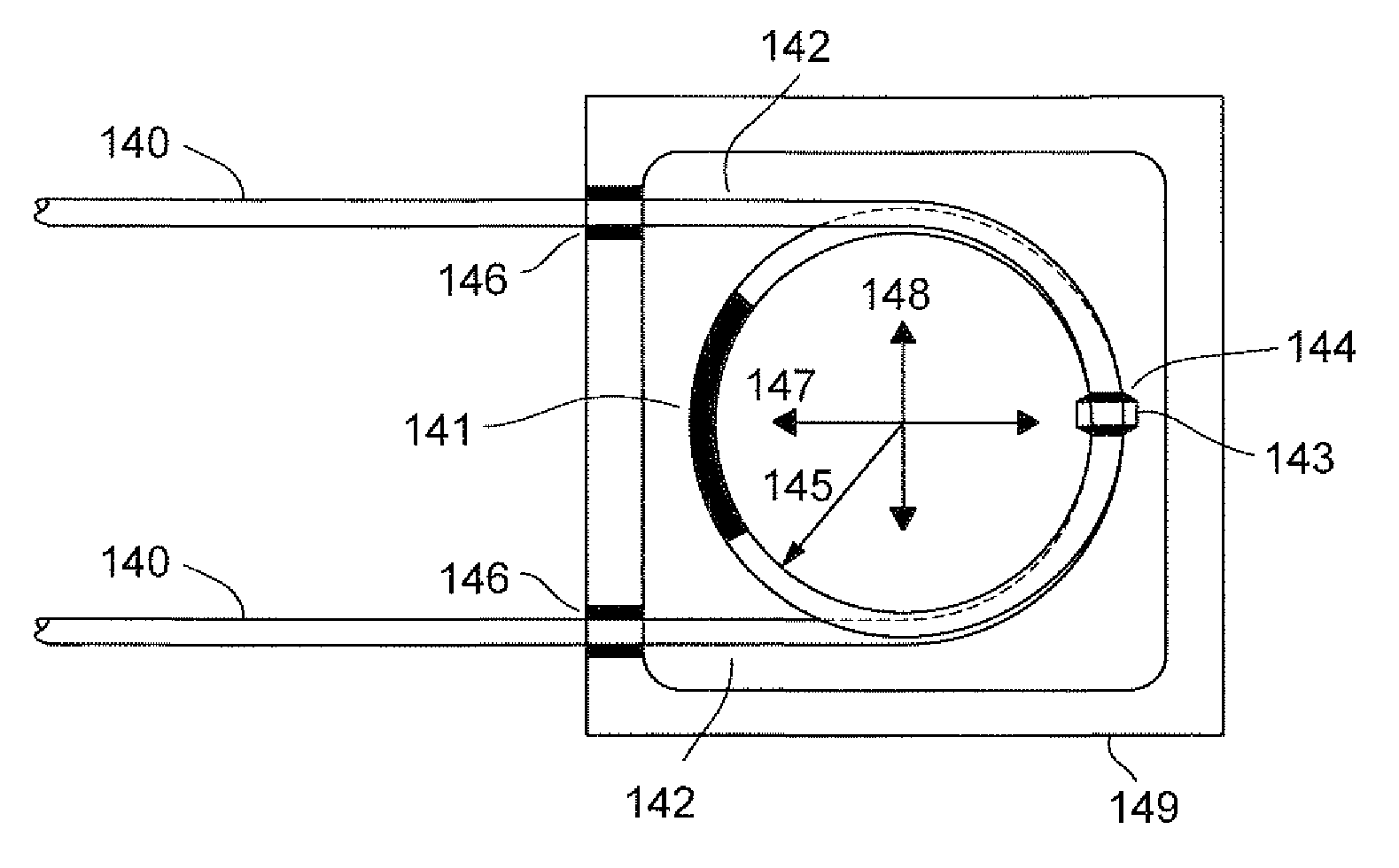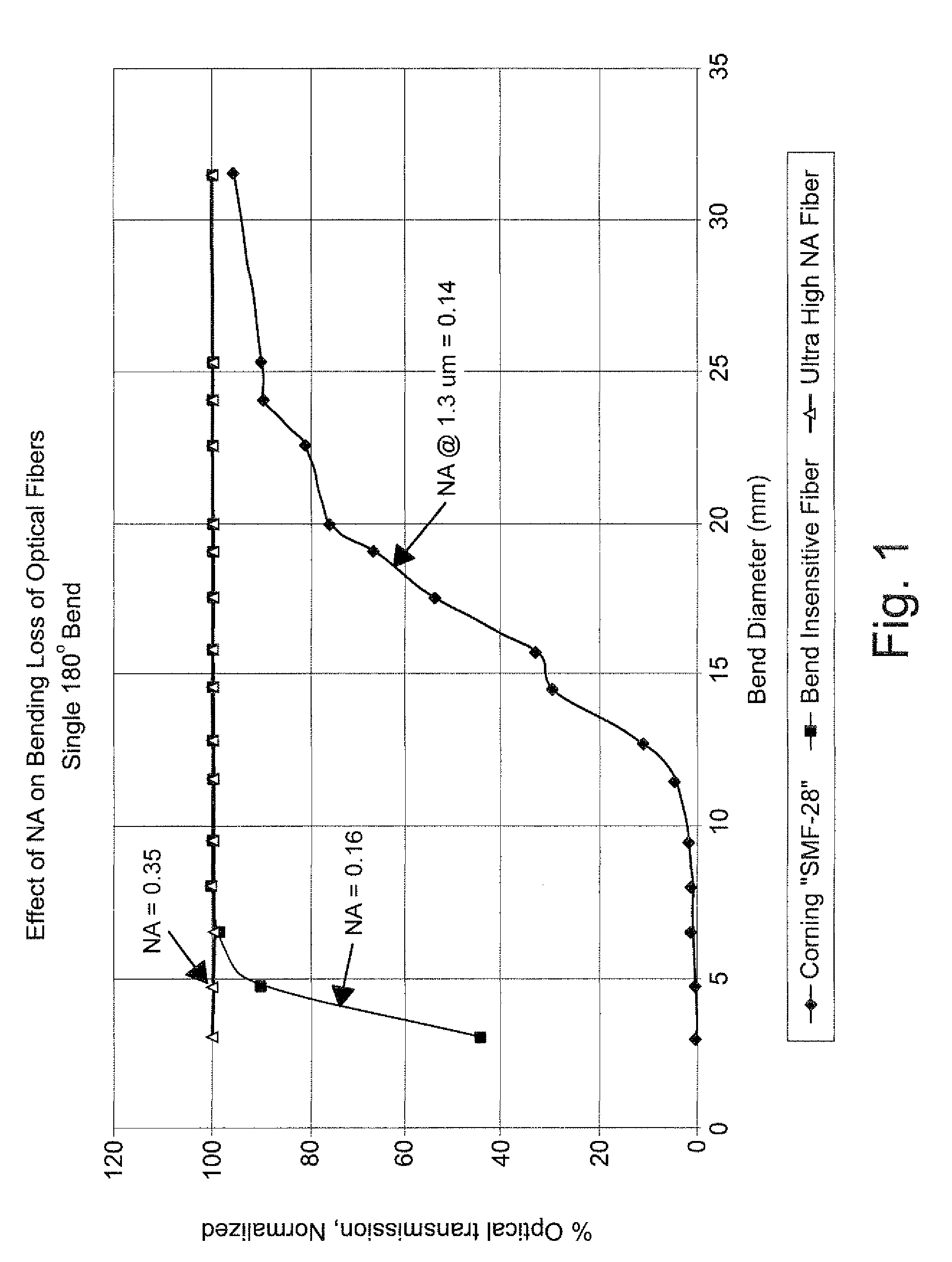Compact fiber optic sensors and method of making same
a technology of fiber optic sensors and fiber optic grating, which is applied in the direction of cladding optical fibre, instruments, heat measurement, etc., can solve the problems of fbg temperature calibration and even repeatability, significant and adversely affecting the accuracy of fbg, and preventing fiber breakage. , the effect of slow cooling the bend
- Summary
- Abstract
- Description
- Claims
- Application Information
AI Technical Summary
Benefits of technology
Problems solved by technology
Method used
Image
Examples
Embodiment Construction
[0063]FIGS. 2A-2E show different views of one example illustrative non-limiting example implementation providing a competitively small, physically single ended and yet optically double ended, strain-free temperature sensor probe. In FIG. 2A, the input / output fibers 30, 30′ shown have numerical aperture greater than 0.15 and a 180° uniform mechanical or thermal bend with uniform radius 35 less than or equal to 10 mm. At least one front brace 32 is provided with its centerline substantially along the diameter of the bend 35 and at least one back brace 33 fixed to the fiber at least at points 34 with a fixative. The purpose of said braces 32, 33 to maintain the at least one FBG 31 free of longitudinal and / or bending stresses, while being of low enough mass to prevent the fiber from bending substantially in the direction normal to the plane of the 180° bend under gravity or other forces. While said braces 32 and 33 may be of different materials, it is preferable that they be of the same...
PUM
| Property | Measurement | Unit |
|---|---|---|
| bend angle | aaaaa | aaaaa |
| distance | aaaaa | aaaaa |
| weight | aaaaa | aaaaa |
Abstract
Description
Claims
Application Information
 Login to View More
Login to View More - R&D
- Intellectual Property
- Life Sciences
- Materials
- Tech Scout
- Unparalleled Data Quality
- Higher Quality Content
- 60% Fewer Hallucinations
Browse by: Latest US Patents, China's latest patents, Technical Efficacy Thesaurus, Application Domain, Technology Topic, Popular Technical Reports.
© 2025 PatSnap. All rights reserved.Legal|Privacy policy|Modern Slavery Act Transparency Statement|Sitemap|About US| Contact US: help@patsnap.com



